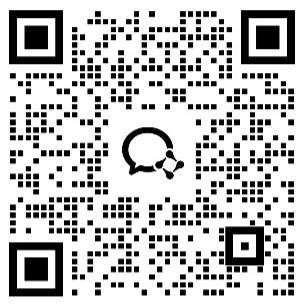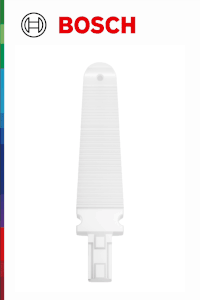Why Medtech Manufacturers Should Automate Fluid Dispensing Operations
2019-06-26
Researching, designing, developing, and manufacturing medical devices is an exact science. Consequently, fluids used to manufacture medical devices must be dispensed according to scientific principles—especially as devices shrink, parts are closer together, and substrates become more fragile and more prone to contamination. To address these challenges, medtech manufacturers are increasingly turning to the use of robotic dispensing technologies.
Used for bonding, gasketing, filling, lubricating, and sealing, the fluids used in medical device applications range from thick to thin. They can be two-part combinations, viscosity changing, or light curable. In addition, they can be dispensed in single or batch processes or in volume manufacturing operations using fully automated in-line systems. Whether they are used for R&D or prototyping purposes or in low-volume or high-volume production, fluids can be dispensed most precisely, reliably, and repeatedly using automated dispensing systems, enabling manufacturers to save materials, time, labor, and resources.
However, the transition from manual to automated fluid dispensing is more involved than simply deciding to automate. Determining what to automate is key. Thus, manufacturers considering the shift to automated dispensing should look closely at their entire process to ascertain whether automating a part of it will help them to improve safety, performance, product quality, reliability, or productivity.
Contact vs. Noncontact Dispensing
Figure 1: Contact dispensing requires that the dispensing tip be placed close to the part.
Two methods are commonly employed to dispense process fluids: contact dispensing, in which fluids are dispensed using a dispensing tip, and noncontact dispensing, in which fluids are commonly jetted. A manufacturer should choose one or the other depending on the viscosity and consistency of the fluid and the application requirements.
While contact dispensing produces much smaller deposit sizes than noncontact dispensing, the dispensing tip must be placed close enough to the part so that the fluid can make contact with the tip and part at the same time, as illustrated in Figure 1. In automated dispensing processes, this method is more time-consuming than the noncontact method because the tip must be lowered onto the dispensing area and retracted before it is moved to the next dispensing point.
In contrast, noncontact dispensing accelerates the process because the jetting action does not require automation to lower and raise the tip along the z-axis. Thus, the cycling of the jetting valve—which is usually piezoelectric—is performed at much faster speeds and higher cycle rates than tip dispensing can achieve, allowing for greater cycle-time savings. An example of how a noncontact jetting valve dispenses fluid is shown in Figure 2.
Figure 2: A noncontact dispensing system uses a jetting valve to dispense fluid.
In automated noncontact dispensing systems, some valves dispense fluids in volumes down to 0.2 nl with diameters as small as 50 µm. They can also handle fluids with waterlike viscosities ranging from 1 to 5 cPs or thick pastes with viscosities up to 1,000,000 cPs at continuous dispense speeds up to 500 Hz. Accurate systems, precision automated dispensers can deposit fluids at the desired location, including hard-to-reach places and device edges.
Automated Dispensing: Hardware and Software
The accuracy associated with dispensing fluids manually is highly dependent on the skill of the operator. In contrast, automated dispensing systems can be programmed to dispense dots, lines, circles, arcs, and compound arcs with accurate and repeatable tolerances. Such systems are usually designed to store multiple dispensing programs that can be retrieved as desired. The more advanced the system, the more accurately it dispenses fluids and performs complex dispensing patterns.
One such tool allows the user to move the dispensing head into the required position and program the coordinates. Another, more intricate option uses a vision-guided automated dispensing system that enables the robot to magnify the part to better position the dispensing head while providing an on-screen preview of the dispensing path. As shown in Figure 3, this functionality can enable the operator to view a magnified image of the part. The use of a vision system removes much of the guesswork from the process, minimizing programming times in complex dispensing applications.
Automated dispensing systems incorporating vision capability can often align programs to changes in part-to-part placement or fixture tolerance. They can also often integrate the vision system with embedded software to align the program to set fiducial points on a part, allowing the system to move the dispensing points and the path to accommodate placement changes from one part to another. In many instances, these systems can also provide optical confirmation that the workpiece is present to avoid dispensing fluid when a part is missing. More-sophisticated vision-guided automated dispensing systems often utilize higher-level vision systems, more-complex programming, and encoders in a closed-loop configuration, providing precise, accurate, and repeatable results in complex applications.
Figure 3: Using a vision system, the operator can achieve optimal programming by viewing the dispense path.
Because part positioning, irregular surfaces, thickness differences, and distortion can exceed dispensing tolerances, contact between the tip and the part is almost certain if the dispensing system cannot compensate for such variances. And depending on the complexity of the medical device, contact dispensing can damage fragile substrates. To manage these variances, some automated dispensing systems incorporate a laser noncontact height-sensing device, as illustrated in Figure 4.
For example, because it is difficult to place probes onto the tightly spaced components on small PCBs, a laser can be used to measure height variations. By incorporating laser height-sensing capability into an automated dispensing system, the system can detect the distance between the part and the dispensing tip or valve.
The shape of the fluid deposit and its placement accuracy often depend on the positioning and the height of the dispensing tip in relation to the part. Laser height-sensing functionality enables operators to achieve proper placement and positioning so that they can maintain even deposit sizes for the entire length of a continuous pattern. Laser height-sensing capability also ensures that the needle will not touch the substrate, reducing contamination and preventing damage to delicate parts.
Figure 4: Automated dispensing systems can be equipped with a laser height-sensing device to compensate for irregular part surfaces, thickness differences, and other variances.
Software can be the most differentiating part of an automated dispensing unit because it controls the system, enables system integration, provides the operator interface, and determines how easy or complicated the system is to operate. Intuitive and easy to use, today’s software incorporates more process controls, programming capabilities, and closed-loop systems for process monitoring and on-the-fly feedback than ever. For example, a closed-loop system ensures that the dispenser is positioned where it needs to be. After being programmed into the system, the dispensing parameters allow the system to adjust continuously during the dispensing process.
Selecting the Right Robot for the Right Job
Automated dispensing systems come in a variety of configurations and platform sizes—including stand-alone, tabletop, and integrated—to fit in-line with manufacturing cells. The appropriate size and configuration of the platform depends on the size of the part, the desired throughput, and the manufacturing process layout.
Manufacturers opting for stand-alone or tabletop dispensing systems should consider scalability. Because some systems can be configured with multiple dispensing heads, deploying a slightly larger platform can double the throughput. Manufacturers should also understand their application requirements in order to select the most appropriate system, especially because the medical device industry uses many specialized fluids.
As medical device dimensions shrink, manufacturers are shifting to the use of robotics to perform a range of processing tasks, including fluid dispensing. Automated dispensing systems provide faster cycle times, higher throughputs, and better quality than manual systems, resulting in higher yields. To get the most out of an automated system, manufacturers should assess their processes, dispensing application requirements, challenges, resources, and near-future goals before attempting to incorporate automation into their production operations.
SOURCE:MDDI











